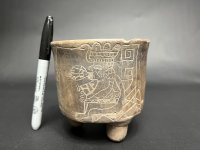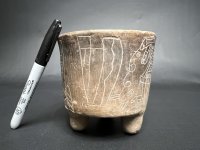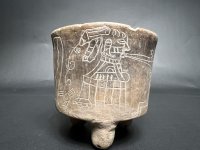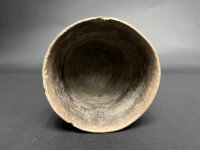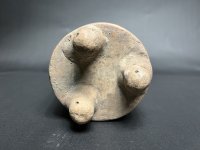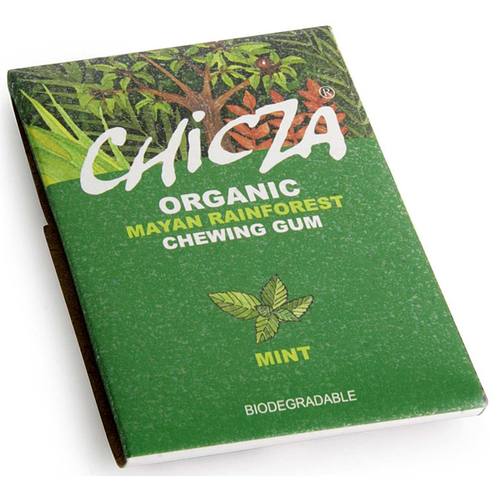Navigation
Install the app
How to install the app on iOS
Follow along with the video below to see how to install our site as a web app on your home screen.
Note: This feature may not be available in some browsers.
More options
You are using an out of date browser. It may not display this or other websites correctly.
You should upgrade or use an alternative browser.
You should upgrade or use an alternative browser.
🔎 UNIDENTIFIED Rare Etched Pre-Columbian Bowl?
- Thread starter TreasureHunter02
- Start date
-
- Tags
- artifact pre columbian rare
GoldieLocks
Bronze Member
I believe this is Myan influenced, but dating it is going to be tricky given anyone could have used such a design from a Myan period to date. You would almost have to be able to carbon date the actual pottery. I don't think that can be done at all. On Mesoamerican Mexican site origins of pots and other ceramics show most having red ocre color mixed fully coloring the pottery very red.
Last edited:
Upvote
3
DCMatt
Gold Member
- Oct 12, 2006
- 10,429
- 13,676
- Detector(s) used
- Minelab Equinox 600, EX II, & Musketeer, White's Classic
- Primary Interest:
- Metal Detecting
I agree. It looks Mayan influenced. A cacao drinking cup. But it's very crude by Mayan standards. I would consult an expert in the field to find out more info.I believe this is Myan influenced, but dating it is going to be tricky given anyone could have used such a design from a Myan period to date. You would almost have to be able to carbon date the actual pottery. I don't think that can be done at all. On Mesoamerican Mexican site origins of pots and other ceramics show most having red ocre color mixed fully coloring the pottery very red.
Upvote
2
CreakyDigger
Gold Member
- Jul 23, 2019
- 7,150
- 23,454
- Detector(s) used
- White's Spectra v3; Equinox 600
- Primary Interest:
- All Treasure Hunting
I hope an expert confirms your purchase as authentic - it's dang cool whatever it is.
Upvote
0
DizzyDigger
Gold Member
- Dec 9, 2012
- 6,354
- 12,884
- Detector(s) used
- Nokta FoRs Gold, a Gold Cube, 2 Keene Sluices and Lord only knows how many pans....not to mention a load of other gear my wife still doesn't know about!
- Primary Interest:
- Prospecting
The etching appears modern, added later and was crudely scratched out.
I know little about this type of pottery, but it does seem logical that
if the etching were done at the time it was made it should show the
same patina/aging as the rest of the exterior.
Upvote
5
Emil W
Sr. Member
- Nov 4, 2021
- 477
- 1,094
- Detector(s) used
- Deus 2
Deus
Deus Lite
Garrett Apex
Garrett Pinpointer
BH Discovery 2200
BH Pioneer EX
White's Coinmaster 6000D (have had for decades)
- Primary Interest:
- Metal Detecting
I know little about this type of pottery, but it does seem logical that
if the etching were done at the time it was made it should show the
same patina/aging as the rest of the exterior.
I agree. There's no doubt the patina in the etching would have to match the rest of the piece. The engraving is modern. Without examining the piece in person it's impossible to say if the engraving was added to a genuine artifact or if the overall piece is modern, but it does look like it's potentially real. Unfortunately, if it's real with modern etching it has no real value. I generally use a microscope to look for dendritic crystal structures that only occur over time. That's usually enough to confirm that an item is at least not modern as it requires many years of constantly changing moisture and mineral conditions to form these crystal structures.
I have close to 100 pre-Columbian pieces although I don't really collect them, so I'd consider myself a novice as far as styles and cultures go. My expertise is in Bronze Age through Greek and Roman period pottery and bronze and they make up a majority of my antiquities collection.
Upvote
3
GoDeep
Bronze Member
- Nov 12, 2016
- 2,120
- 4,516
- Detector(s) used
- Whites, Garrett, Minelab
- Primary Interest:
- All Treasure Hunting
To add ,, the feet look suspect to me too,. They are crude and just pushed on and the raidus's built up by pushing clay in where they attach to give them more support, like a beginner school pottery class would do. I would say it was a school pottery class piece that was later carved.
If you look at this pre columbian piece, it's more what you'd expect on the feet, more integrated and streamlined, not an afterthought.

If you look at this pre columbian piece, it's more what you'd expect on the feet, more integrated and streamlined, not an afterthought.
Last edited:
Upvote
3
- Jun 8, 2006
- 6,267
- 8,861
- Detector(s) used
- Whites, Minelab, Tesoro, and custom machines
- Primary Interest:
- Metal Detecting
Just when I thought I'd seen everything!!
Upvote
1
- Jul 27, 2006
- 49,407
- 57,566
- Detector(s) used
- Minelab_Equinox_ 800 Minelab_CTX-3030 Minelab_Excal_1000 Minelab_Sovereign_GT Minelab_Safari Minelab_ETrac Whites_Beach_Hunter_ID Fisher_1235_X
- Primary Interest:
- All Treasure Hunting
As others have said, the patina should be uniform in the etching and it isn't.
Upvote
1
Top Member Reactions
-
 3473
3473 -
 1976
1976 -
 1911
1911 -
 1157
1157 -
 1091
1091 -
 1009
1009 -
 883
883 -
 863
863 -
 861
861 -
 791
791 -
 757
757 -
 676
676 -
 659
659 -
 567
567 -
 508
508 -
 451
451 -
 447
447 -
 410
410 -
 401
401 -
E
398
Users who are viewing this thread
Total: 2 (members: 0, guests: 2)
